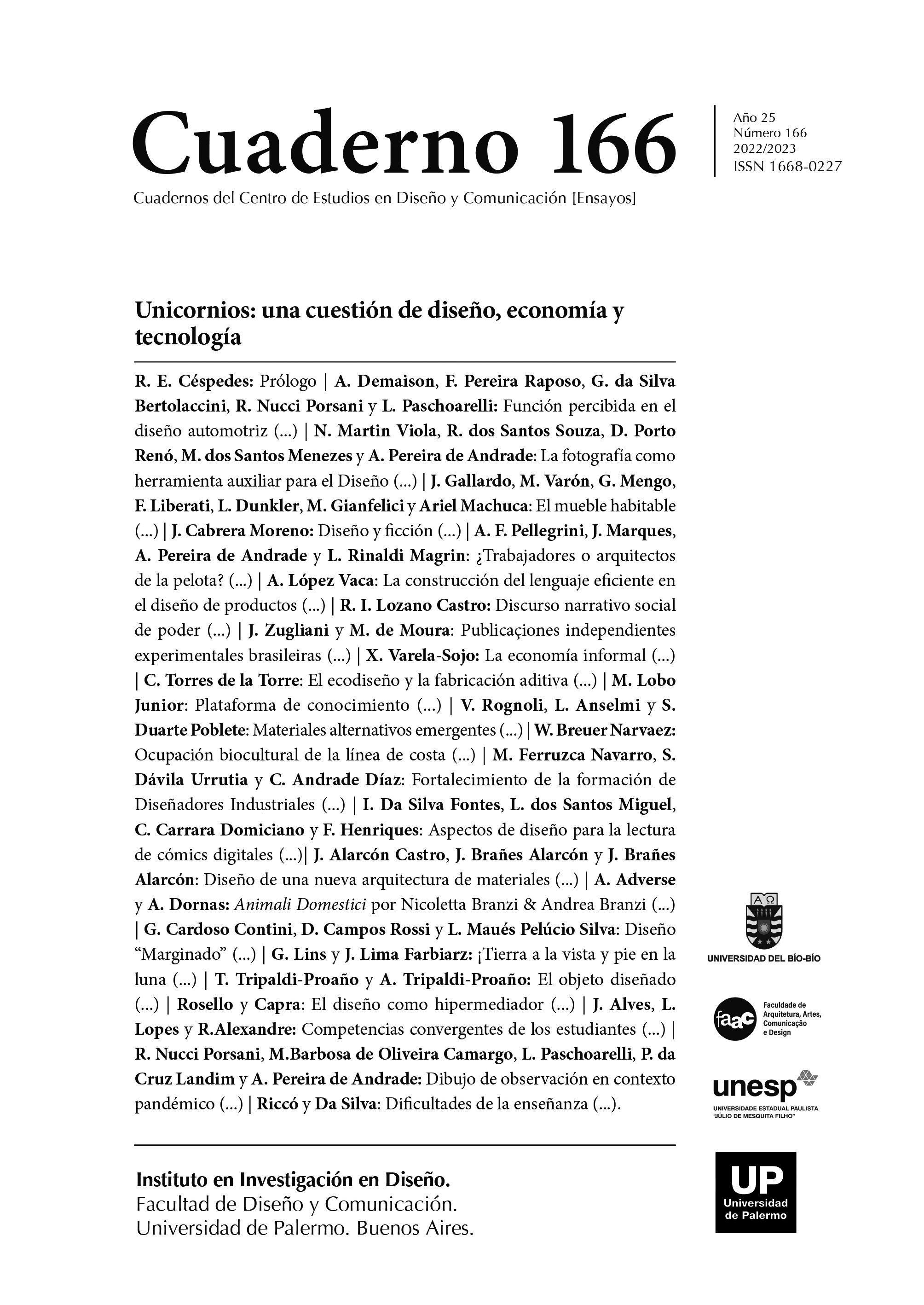Animali Domestici por Nicoletta Branzi & Andrea Branzi: del nomadismo cultural al concepto radicante en el diseño ecosocial
Abstract
The article presents a critical analysis of the work Animali Domestici (1985) designed by Nicoletta Branzi and Andrea Branzi. The text calls into question the extemporaneousness of the work that, in the mid-1980s, anticipated important discussions on the transformations of the design culture, the development of technology and the economy. In view of this, we resumed the texts of Giedion, Restany, Branzi, Weil, Bourdieu etc to expand the central discussions of the work: cultural nomadism as a vector for thinking about diversity. Thus, we investigate how the performance of the explorer designers presents the radicant concept impacting the conception of ecosocial design in its dialogue with fashion.
References
Benjamin, Walter (1996). Obras Escolhidas I. Magia & Técnica. Arte & Política. São Paulo: Brasiliense.
Bianchino, Gloria (2006). Introduction. In: Branzi, Andrea. Non Stop City (2006). Archizoom Associati. Orléans: Éditions Hyx.
Bourriaud, Nicolas (2011).Radicante. São Paulo: Martins Fontes.
Branzi, Andrea (1986). We are the primitives. New York: MIT Press. In: Design Issues, Vol. 3, No. 1, pp. 23-27. Link: http://www.jstor.org/stable/1571638 acesso 23 de março de 2022.
Branzi, Andrea. Non Stop City (2006). Archizoom Associati. Orléans: Éditions Hyx.
Branzi, Andrea (2009). Qu’est-ce que le design? Paris: Gründ.
Branzi, Andrea; Ranzo, Patrizia; Rui, Angela. Andrea Branzi. Tradução de Anna Quirino. São Paulo: Folha de S. Paulo, 2012. (Coleção Folha Grandes Designers, v. 19).
Giedion, Siegrifrid (1970). Mechanization Takes Command. A contribution to anonymous history. New York: Oxford University Press.
Jameson, Fredric (2021). Arqueologias do futuro. O desejo chamado utopia e outras ficções cinetíficas. Belo Horizonte: Autêntica.
Letson, Daniel. Globole, “Domestic Animals: the Neoprimitive Style”, 20 de janeiro de 2014. Acesso em 07 de fevereiro de 2022. http://glob.daniel-letson.com/posts/category/design/tomes/
Papanek, Victor (2021). Design pour un monde réel. Paris: Les Press du Réel. Potte-Bonneville, Mathieu (2006). Amorces. Paris: les Praires Ordinaires.
Pithon, Geoffroy (2011). Les ambicieux geografiques. Le nomadisme et le design. Paris: EnsAD. Ranzo, Patrizia; RUI, Angela. Andrea Branzi. Tradução de Anna Quirino. São Paulo: Folha de S. Paulo, 2012. (Coleção Folha Grandes Designers, v. 19).
Restany, Pierre (1978). Manifesto do Rio Negro do Naturalismo Integral. Belo Horizonte: Jornal Estado de Minas. 17 de Outubro.
Segalen, Victor (2002). Essay on Exotism. An Aesthetics of Diversity. London: Duke University Press. Selzer, Julia. (n.d.) Collection Design Museum. Animali Domestici.
In:http://collectiononline.design-museum.de/#/en/object/42743?_k=vthzax acesso 25 de janeiro de 2022.
Weil, Simone (2001). O Enraizamento. Bauru: EDUSC.
Filmografia
Tremolada, Emilio (2016). Andrea Branzi. Moderno, Pós Moderno, Neo Primitivo. Itália: Column. Duração: 15.33 minutos. In: https://vimeo.com/ondemand/neoprimitivo acesso 23 de março de 2022.
Los autores/as que publiquen en esta revista ceden los derechos de autor y de publicación a "Cuadernos del Centro de Estudios de Diseño y Comunicación", Aceptando el registro de su trabajo bajo una licencia de atribución de Creative Commons, que permite a terceros utilizar lo publicado siempre que de el crédito pertinente a los autores y a esta revista.


